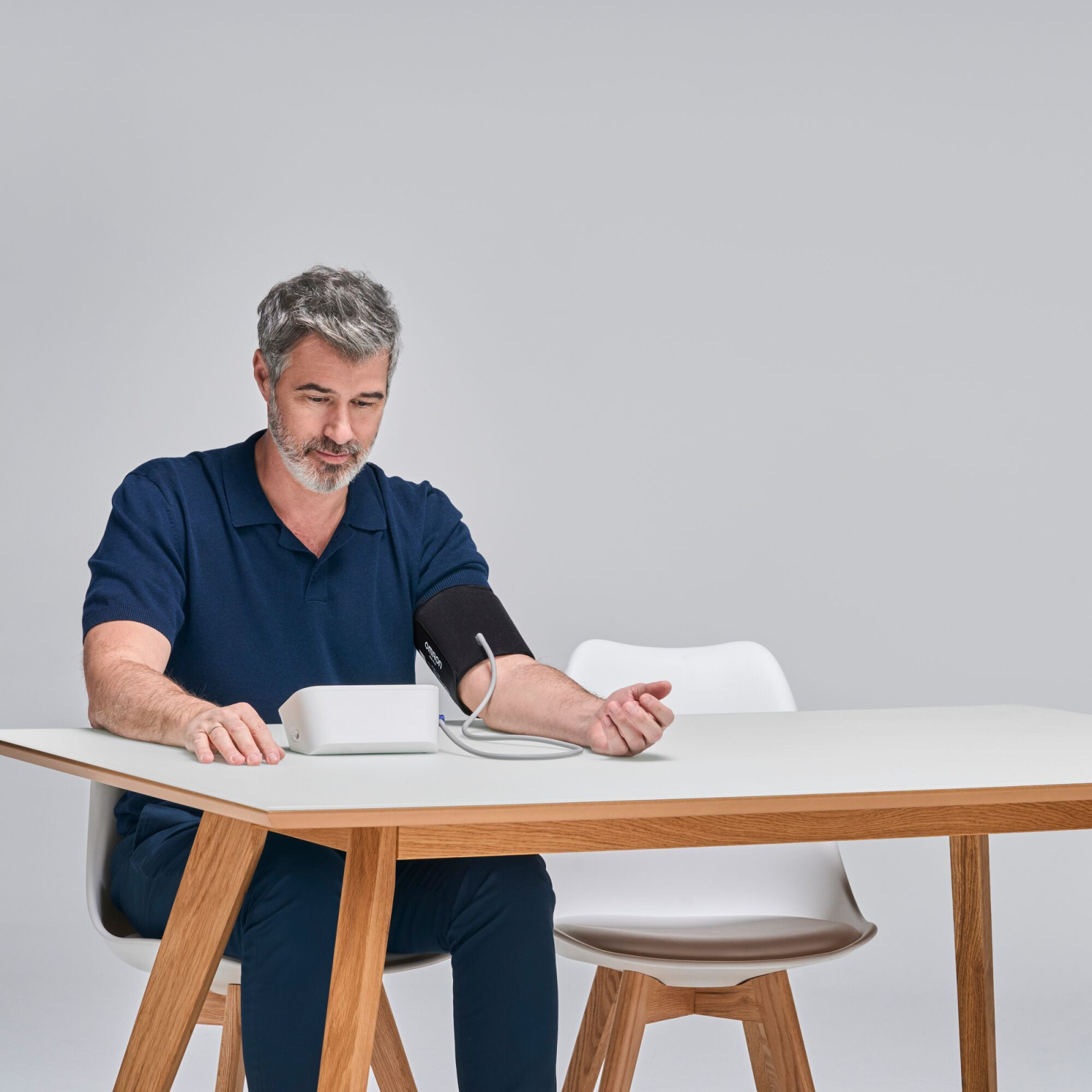Cardiovascular diseases
How to monitor blood pressure
Your numbers often change. Did you know that blood pressure in the morning can be significantly different than at night, or when you visit a doctor’s office? By using an OMRON Blood Pressure Monitor at home you’ll be able to detect all the changes to your blood pressure any time you want.


Your numbers often change. Did you know that blood pressure in the morning can be significantly different than at night, or when you visit a doctor’s office? By using an OMRON Blood Pressure Monitor at home you’ll be able to detect all the changes to your blood pressure any time you want. The accuracy of all OMRON blood pressure monitors—both upper arm and wrist models—is validated by three major global organizations that develop testing protocols.
Find the right cuff
Cuff size is also very important in ensuring an accurate reading every time you monitor.
Before you purchase a home blood pressure monitor, it’s important to determine if you need a standard or large size cuff. To determine your arm size, use a cloth measuring tape and measure the circumference of your left upper arm midway between your elbow and shoulder.
Standard Adult Cuff – fits arm sizes 9.0 to 13.0 inches
Large Adult Cuff – fits arm sizes 13.0 to 17.0 inches
ComFit Cuff – fits both standard and large size arms 9.0 to 17.0 inches
Wide-Range Adult Cuff – fits both standard and large size arms 9.0 to 17.0 inches
Monitoring at home
It’s easy. To ensure an accurate reading, follow these tips before you get started.
Do not measure within 30 minutes of:
Exercising, Eating, Smoking, Drinking Alcohol or Bathing.
Sit quietly for about 5 minutes with both feet flat on the floor.
By following these simple steps, you’ll be able to accurately detect and track the changes in your blood pressure to know exactly where you stand.
Small changes, huge rewards
Managing your blood pressure doesn’t have to take a lot of work. In fact, small improvements can significantly boost your health. Make these changes, and you’ll feel better that you did.
EXERCISE Be active. It’s the best way to a better heart.
DIET Eat right. Low-fat, low-sodium substitutes are the best medicine.
HABITS Kick the habits. Minimize your alcohol and cigarette intake.
STRESS Stifle the stress. Relax by doing things you enjoy.
PHYSICIAN Your doctor can help you create a healthy plan of action to follow.
ACC/AHA blood pressure guidelines: Check-in time
Blood pressure | Systolic mmHg | Diastolic mmHg | |
|---|---|---|---|
Normal | less than 120 | and | less than 80 |
Elevated | 120 to 129 | and | less than 80 |
High blood pressure: | 130 to 139 | or | 80 than 89 |
High blood pressure: | 140 or higher | or | 90 or higher |
Source: American College of Cardiology and American Heart Association 2017 High Blood Pressure Clinical Practice Guidelines